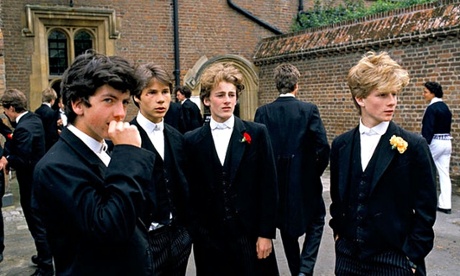Mark Steel in The Independent
If the Green Party isn’t allowed into the TV election debates, there should be a compromise, such as its MP, Caroline Lucas, being allowed to present an episode of Top Gear.
She could zip through the Lake District, saying: “But while it HANDLES like a DREAM, the new Alfa Romeo 2.3 litre XL Deluxe has just one problem. It’s an UNBELIEVABLY inefficient way to use energy compared to a reasonably priced re-nationalised rail network.”
Or the leader of the Green Party, Natalie Bennett, could be offered a different slot, such as commentating on an international rugby match. “The New Zealand pack is absolutely immense,” she could say, adding: “But even if it rucked across Sussex for two months it wouldn’t endanger natural resources as much as fracking.”
The party might have to try this, because the debates proposed don’t include the Greens at all, despite some polls showing it ahead of the Liberal Democrats. The BBC explained this was because, “We take into account electoral results from past elections”, in which case there must be an argument for including the Whigs, which remained high in the polls up to 1850.
Its leader could promise to reduce the deficit by colonising Africa, before becoming involved in a heated discussion about immigration with a Saxon warlord, who had been invited as he was part of a coalition government throughout much of the 10th century.
The Liberal Democrats have agreed the Green Party shouldn’t be allowed to take part, although it came ahead of the Lib Dems in the European elections and many recent polls. Maybe party members feel there should be a different set of rules for who’s invited, depending on the number of letters in a party’s name. So the debate on Channel 4 should only include the Liberal Democrats and the Reclassify the Brontosaurus as a Type of Diplodocus Party.
You can understand the Liberal Democrats feeling jittery about the TV election debates. Because in the last ones the party leader persuaded many people to vote for him, by confirming his pledge to abolish tuition fees. But in all the stress of a live debate, he got the words abolish and treble mixed up.
And he harangued the Conservatives for planning to put up VAT to 20 per cent, which the party angrily denied. But happily a few weeks later they’d sorted out this disagreement, by both putting it up to 20 per cent together. It’s a heart-warming tale of friendship overcoming silly squabbles that should be made into a romcom with Clegg played by Jennifer Aniston.
The problem now is no sane person can believe anything Nick Clegg promises, pledges or vows again. So there’s no point in him being there at all, as he’s like the bloke in the pub who tells ridiculous stories no one listens to. Dimbleby can ask whether he’d renew Trident, and he could reply: “I know Ronnie O’Sullivan. I always beat him at snooker, only the Government doesn’t let me in the tournaments ‘cos I’ve been shagging Michele Obama.”
Despite this, no one would suggest Nick Clegg shouldn’t be allowed in the TV debates. But it might be best if he was given a separate slot, like the act that comes on half way through the Super Bowl. He can dance to his latest apology, maybe in a provocative dress, and that way he doesn’t make such a fool of himself but the honour of the democratic process is preserved.
Another reason given for excluding the Greens is that once you have five people in a debate, it becomes too unmanageable. And you can see how it might become difficult for the viewer to even remember who was who. When there are just four white men between 40 and 50 in suits and ties, it’s easy to tell everyone apart. But the Green Party leader is an Australian woman, and if you add her in, people watching at home would get her mixed up with Nigel Farage, or become confused and think they were watching an old episode of Neighbours.
There’s another reason why the Greens could spoil the evening. If the debates are just between the four leaders, there will be a soothing pattern to the discussion. For example, on immigration each leader in turn will say: “I deny we’ll let in more immigrants and that swe like immigrants and accuse all of you of liking immigrants, and you say you hate immigrants but we really hate immigrants and we’ll ban immigrants from eating biscuits until they’ve been here three years, and won’t let them into doctors’ surgeries unless they drink a tin of paint for the amusement of other patients.”
So if someone answers by suggesting immigration isn’t the main problem, it will ruin the whole event, like if someone turned up for a game of cards and insisted on playing tag-team wrestling instead.
You can understand why the three old parties are worried about letting in anyone from outside, as they seem honestly to believe they’re the main, proper, real parties and everyone else is still “others”. Their most persuasive argument against voting for anyone else is “they can’t win”, or “don’t all vote for them, they’re unelectable”.
The answer could be to allow the five leaders to take part in the debates, but allow each one to nominate a programme the others have to appear in, starting with David Cameron on Made in Chelsea, spending the whole show saying “Sorry, do I know you?” as he pretended not to know all his old mates

